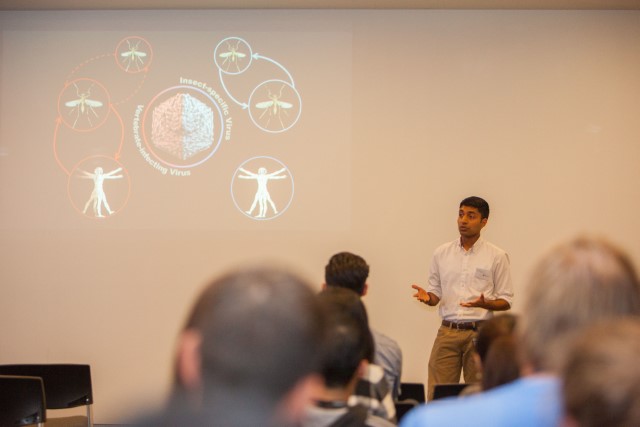 Are you a science student who has had to prepare a poster, present calculations, do public speaking or whip up slides for a talk to an audience of staff and students?
Are you a science student who has had to prepare a poster, present calculations, do public speaking or whip up slides for a talk to an audience of staff and students?
These can be nerve-racking experiences, but students at The University of Queensland have come to the rescue by helping to develop a free, online toolkit to enable UQ science students to hone their communication skills.
Deputy Director of UQ’s Institute for Teaching and Learning Innovation (ITaLI) and School of Chemistry and Molecular Biosciences teaching-focused academic Associate Professor Susan Rowland thanked the Science Faculty for supporting CLIPS (Communication Learning in Practice for Scientists).
The site was developed with an ITaLI Techology-Enhanced Learning grant.
“We don’t aim to develop professional science communicators but to help students master the core components of science-focused communication skills,” Dr Rowland said.
Dr Rowland, who is the CLIPS project leader, said it can be difficult for academics to find time and teaching space to address myriad student communication issues.
“The CLIPS project provides a simple way for academics to support large numbers of students in an equitable, consistent, and efficient manner,” she said.
“It’s currently being delivered through Blackboard at UQ and we’ve also built a public CLIPS site.”
Science graduate and science communicator James Hardy was the primary author of CLIPS, and the team included academics Dr Rowland, Dr Kay Colthorpe, Dr Louise Kuchel, Rhianna Pedwell, and a number of undergraduate student contributors.
“We first spoke with academics who taught first-year classes and asked them: ‘If you had more time to support your students in an area of science communication for assessment, what would you spend it on?’” Dr Rowland said.
The two top answers were communicating with numbers and short answer questions.
“After that we continued to speak with academics and ask their opinions, and they gave us more suggestions for the things they wanted to see. This led to the modules that are on the site now,” she said.
Dr Rowland said the site hosted examples of work, academic-provided explanations of ‘how to’ do communication tasks, and explanations of what academics look for when marking student work.
“We are delighted at the usage of CLIPS. We keep tabs on the visits, and in the last six months the site has had over 25,000 page views.”
In the future, the team hopes to develop resources for students who want to communicate professionally in the science workplace.
Media: Associate Professor Susan Rowland, s.rowland1@uq.edu.au, +61 7 336 54615



